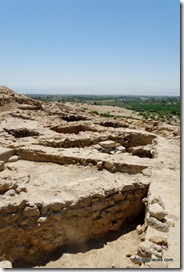A friend recently wrote to ask if I knew how to get higher resolution digital images of the maps and reconstruction diagrams for the new ESV Study Bible. Upon investigating, I realized that he missed one crucial step (see below). But in the process, I was struck by the wealth of visual resources that are available to all who own a copy of this Bible. With the steps below, registered owners can get (what I’d call) medium-resolution images of everything in the Bible. For instance, you get:
- The City of Nineveh
- Jerusalem in the Time of David
- The Tabernacle (about 6 beautiful reconstructions)
- Solomon’s Temple
- Jerusalem in the Time of Solomon
- The City of Jericho
- Jerusalem in the Time of Hezekiah
- Zerubbabel’s Temple
- Jerusalem in the Time of Nehemiah
- The City of Babylon
- The Temple Mount in the Time of Jesus
- Galilean Fishing Boat
- Herod’s Temple in the Time of Jesus
- The Tomb of Jesus
- Herod’s Temple Complex in the Time of Jesus
- Plus a couple hundred maps and charts.
All you have to do is select the image and right-click to save.
The drawings seem to be 1200 pixels wide and the maps are approximately 1000 pixels on the long side. That’s excellent for computer or projector use. Here are the steps to access them (for registered users):
1. Go to http://www.esvstudybible.org/online
2. Select “Maps and Charts” on the top bar.
3. Scroll down and select desired image.
4. Within popup window, click graphic. This opens up the image by itself in a larger size. (If you skip this step, you’ll end up with a much lower-resolution image.)
5. Right-click image; “save image as” (or equivalent in a browser other than Firefox).
Then you can view the image on your screen, drop it into a PowerPoint, or print it for your wall. I checked with the publisher to make sure what I’m telling you is allowed and they stated that you may use these images for personal use (i.e., saved on your computer) or ministry use (i.e., projected for teaching purposes), but not reprinted in other materials or posted onto websites or blogs. (For questions or permissions, email Crossway.)
If you don’t own the Bible, you can see and download some free drawings, a map, and a city plan on their blog, plus a few at Amazon.
So for $32, you not only get a really fat book, you also get electronic access to 40 reconstruction diagrams plus 200 full-color maps. I know the market pretty well in this area and I’d suggest that you’re getting your money’s worth just from the digital images. It’s like the printed Bible is thrown in for free.
I use the printed Bible and the online Bible every week for reasons entirely other than what is listed above. You can see more of what keeps me coming back (print and digital) even though I have two shelves of other Bibles.
